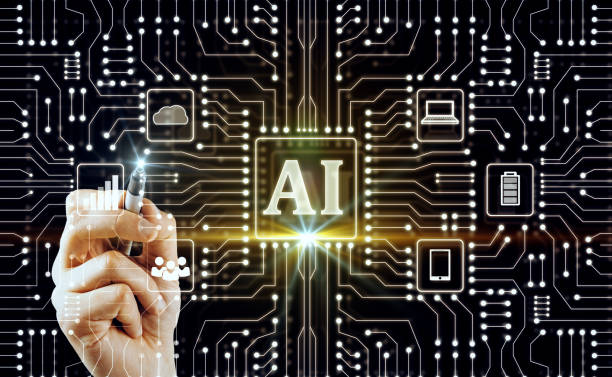Introduction to AI Robots: Definition, History, and Types

In today’s world, #Artificial_Intelligence (AI) is rapidly advancing and plays a significant role in our lives.
One of the manifestations of this progress is the AI robot.
But what exactly is an AI robot? Simply put, an AI robot is an intelligent agent that can sense its environment, reason about it, make decisions, and take actions.
These robots are usually a combination of hardware (such as arms and sensors) and software (such as machine learning algorithms).
The history of AI robots dates back decades, but with recent advancements in deep learning and natural language processing, these robots have gained remarkable capabilities.
There are various types of AI robots, including industrial robots used in factories to automate repetitive tasks, service robots that assist people in daily chores, and chatbots that can interact with humans online.
For example, IBM has made significant progress in this field.
Each type of AI robot is designed for a specific application and has unique features.
Don’t have a corporate website yet and missing out on online opportunities? With professional corporate website design by Rasawweb,
✅ Double your business credibility
✅ Attract new customers
⚡ Free consultation for your corporate website!
AI Robot Architecture: Components and Functionality

An AI robot consists of various components that work together to enable it to perform different tasks.
The most important components of an AI robot include sensors, processors, actuators, and AI algorithms.
Sensors collect information about the environment, processors analyze and interpret this information, actuators perform the necessary actions, and AI algorithms help the robot make intelligent decisions.
The functioning of an AI robot typically involves sensors first collecting data, then the data being transferred to the processor, the processor deciding what action to take using AI algorithms, and finally the actuators performing the desired action.
For example, in a self-driving car, cameras and LiDAR act as sensors, the in-car computer acts as the processor, the engine and steering system act as actuators, and machine learning algorithms help the robot find its way and avoid obstacles.
This integration between components enables the AI robot to operate effectively in complex and dynamic environments.
Applications of AI Robots in Various Industries
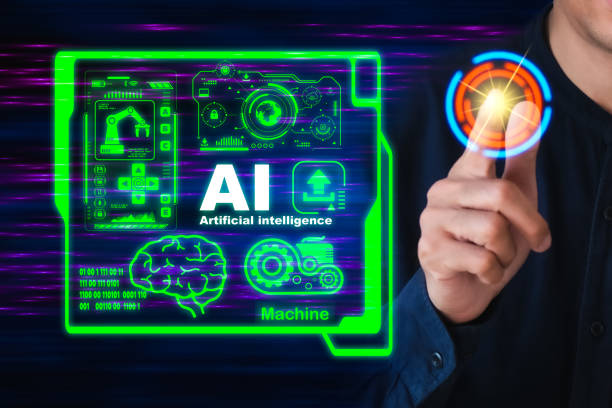
AI robots have widespread applications in various industries.
In the manufacturing industry, robots are used to automate repetitive and dangerous tasks, which increases productivity and reduces costs.
In the healthcare industry, robots are used for performing precise surgeries, assisting nurses, and caring for patients.
In the transportation industry, self-driving robots are used for transporting goods and passengers, which reduces accidents and improves traffic.
In the customer service industry, chatbots are used to answer customer questions and provide technical support.
For example, Siemens uses AI robots in its production lines to optimize the manufacturing process.
The use of AI robots in various industries not only improves performance but also creates new opportunities for innovation and development.
| Industry | Application | Advantages |
|---|---|---|
| Manufacturing | Task automation, quality control | Increased productivity, reduced errors |
| Healthcare | Precise surgery, patient care | Reduced risks, improved treatment |
| Transportation | Autonomous driving, traffic management | Reduced accidents, route optimization |
| Customer Service | Answering queries, technical support | Improved customer experience, reduced costs |
Advantages and Disadvantages of Using AI Robots

The use of AI robots has many advantages, including increased productivity, reduced costs, improved accuracy, and enhanced safety.
Robots can perform repetitive and dangerous tasks with high precision and without fatigue, which reduces errors and increases safety.
Also, robots can work 24/7, which increases productivity and reduces costs.
However, the use of AI robots also has disadvantages, including high implementation costs, the need for technical expertise, and concerns about job displacement.
Implementing AI robots requires a high initial investment, and maintaining and repairing robots requires technical expertise.
Also, some people are concerned that the widespread use of robots will lead to job losses.
However, many experts believe that AI robots will mostly create new job opportunities rather than eliminate them.
Ultimately, the decision to use AI robots requires careful consideration of the advantages and disadvantages and taking into account the specific conditions of each industry and organization.
Are you tired of your company’s website not meeting your expectations? With Rasawweb, design a professional website that truly represents your business.
✅ Increase attraction of new customers and sales leads
✅ Boost your brand’s credibility and trust with your audience
⚡ Get a free website design consultation!
Challenges in AI Robot Development

The development of AI robots faces numerous challenges.
One of the most important challenges is the development of AI algorithms that can operate effectively in complex and dynamic environments.
Current algorithms still face limitations in some cases and cannot adapt well to sudden and unexpected changes.
Another challenge is collecting sufficient and high-quality data to train AI algorithms.
Machine learning algorithms require large amounts of data for learning, and if the data is incomplete or inaccurate, the performance of the algorithms decreases.
Also, issues related to ethics and security of AI robots are among the important challenges.
It must be ensured that robots operate safely and ethically and do not violate individuals’ rights and privacy.
For example, laws must be enacted to specify the responsibility for robot performance and prevent their misuse.
Addressing these challenges is essential for the development of AI robots to fully utilize the potential of this technology.
Future of AI Robots: Outlook and Predictions
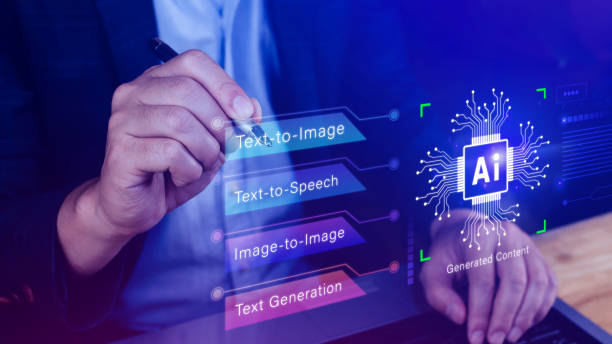
The future of AI robots looks very bright and promising.
With accelerating advancements in artificial intelligence and robotics, it is expected that robots will play a much more significant role in our lives in the future.
It is predicted that robots will be widely used in various fields such as healthcare, education, transportation, and manufacturing.
For example, surgical robots can perform complex surgeries with greater precision, teacher robots can provide personalized education to students, self-driving robots can optimize traffic, and industrial robots can automate manufacturing processes.
Also, it is expected that robots will gain more cognitive abilities in the future and will be able to interact with humans more naturally and effectively.
Overall, the future of AI robots is full of new and exciting opportunities and can bring about major transformations in our lives.
Ethical Considerations Regarding AI Robots
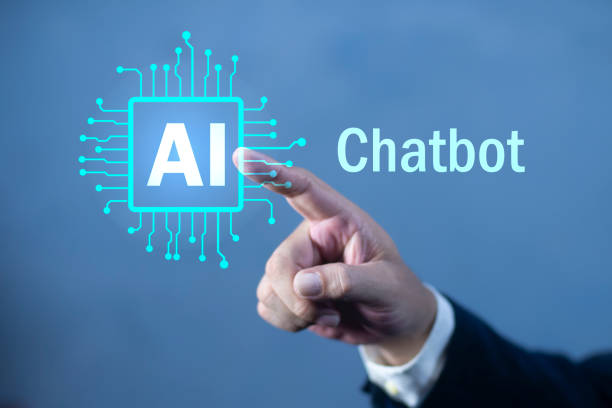
Along with the expansion of AI robot applications, ethical considerations related to this technology are also gaining more importance.
One of the most important ethical considerations is the issue of accountability.
If an AI robot makes a mistake or causes damage, who will be responsible? The robot’s manufacturer, the robot’s user, or the robot itself? These questions require precise and legal answers.
Another ethical consideration is the issue of privacy protection.
Robots usually collect a lot of information about their users, and it must be ensured that this information is kept secure and confidential and is not used for unauthorized purposes.
Also, the issue of discrimination is an important ethical consideration.
AI algorithms may inadvertently be discriminatory and perform unfair behaviors.
For example, a hiring algorithm might inadvertently reject individuals of a particular gender or race.
To prevent these problems, it must be ensured that algorithms are designed and trained fairly and without discrimination.
These ethical considerations require serious attention from developers, policymakers, and society as a whole to ensure that AI robots are used responsibly and ethically.
| Ethical Issue | Description | Solutions |
|---|---|---|
| Accountability | Determining responsibility in case of error | Drafting laws and regulations, setting standards |
| Privacy | Protection of users’ personal information | Data encryption, privacy policies |
| Discrimination | Preventing unfair behaviors | Designing fair algorithms, proper training |
How AI Robots Learn and Are Trained

AI robots need to learn and be trained to perform various tasks.
There are different methods for training robots, including supervised learning, unsupervised learning, and reinforcement learning.
In supervised learning, the robot is trained using labeled data.
This means that each input data is accompanied by a correct output, and the robot tries to learn a relationship between the input and output.
In unsupervised learning, the robot is trained using unlabeled data.
In this method, the robot tries to discover hidden patterns and structures in the data.
In reinforcement learning, the robot is trained by interacting with its environment.
The robot tries to receive rewards by performing various actions, and by repeating this process, it learns how to make the best decisions.
The choice of the appropriate method for training an AI robot depends on the type of task and the available data.
Falling behind in the competition with large online stores?
Rasawweb, by designing a professional e-commerce website, takes your business online and increases your market share!
✅ Boost brand credibility and customer trust
✅ Easy shopping experience leads to more sales
⚡ Act now to get a free website design consultation!
Impact of AI Robots on the Job Market
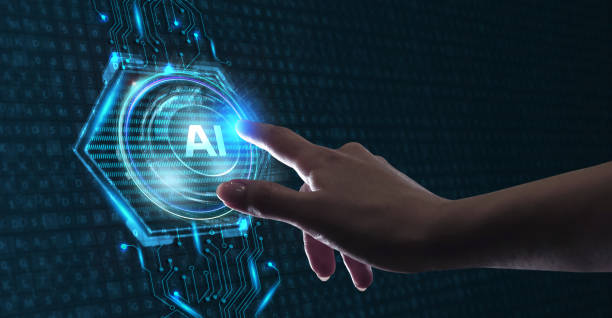
The impact of AI robots on the job market is a controversial topic.
Some believe that robots will lead to job losses, while others believe that robots will create new job opportunities.
The reality is that the impact of AI robots on the job market is complex and depends on various factors.
On one hand, robots can automate repetitive and dangerous tasks, which reduces the need for human labor.
On the other hand, robots can increase productivity and reduce costs, which creates new opportunities for innovation and development.
Also, robots require design, construction, maintenance, and repair, which creates new jobs in related fields.
Overall, it is expected that AI robots will change the structure of the job market, with some jobs being eliminated and new ones being created.
To cope with these changes, individuals must acquire new skills and adapt to the new conditions.
Training and retraining the workforce to adapt to changes caused by AI robots are essential.
Summary and Conclusion on AI Robots

AI robots are a powerful and versatile technology that can bring about major transformations in various industries and our lives.
These robots, using AI algorithms and various sensors, are capable of performing complex and intelligent tasks.
The use of AI robots has many advantages, including increased productivity, reduced costs, improved accuracy, and enhanced safety.
However, the development and use of AI robots also face numerous challenges, including the development of AI algorithms, collecting sufficient and high-quality data, and issues related to ethics and security.
To fully utilize the potential of this technology, these challenges must be given serious attention, and appropriate solutions must be found for them.
Also, ethical considerations related to AI robots must be addressed, and it must be ensured that robots operate responsibly and ethically.
Given the accelerating advancements in artificial intelligence and robotics, it is expected that AI robots will play a much more significant role in our lives in the future and bring about major transformations in the world.
Frequently Asked Questions
| Row | Question | Answer |
|---|---|---|
| 1 | What is an AI robot? | An AI robot is a machine capable of understanding, reasoning, learning, and problem-solving, and can perform complex tasks with relative autonomy. |
| 2 | What are the most important applications of AI robots? | Key applications include industrial manufacturing, customer services (chatbots), medicine and surgery, autonomous transportation, space exploration, and military affairs. |
| 3 | What is the main difference between an AI robot and a regular robot? | A regular robot only follows programmed instructions, while an AI robot can learn from data, make decisions, and adapt to new environments. |
| 4 | How do AI robots learn? | They learn through machine learning algorithms (such as deep learning, reinforcement learning) and by processing vast amounts of data, identifying patterns, and improving their performance. |
| 5 | Can AI robots have emotions? | Currently, AI robots do not have real emotions in the human sense. They can mimic or detect emotions, but they do not understand or experience them. |
| 6 | What are the current limitations of AI robots? | Limitations include the need for large amounts of data, inability to grasp abstract concepts, lack of true creativity, ethical issues, and challenges of generalization in new environments. |
| 7 | What is the role of AI in the development of Humanoid robots? | AI helps humanoid robots walk, maintain balance, understand their surroundings, interact with humans, and perform complex tasks. |
| 8 | How is the future of AI robots predicted? | It is predicted that AI robots will become smarter, more autonomous, and capable of performing more complex tasks in daily life and industry, and their interaction with humans will increase. |
| 9 | Can AI robots replace all human jobs? | It is unlikely that all human jobs will be replaced. Robots will take over many repetitive and dangerous tasks, but jobs requiring creativity, empathy, and ethical judgment will remain. |
| 10 | What ethical and social challenges arise with the expansion of AI robots? | Challenges include issues related to privacy, data security, ethical decision-making by robots, impact on employment, and accountability in case of error. |
And other advertising services by Rasawweb Advertising Agency in the field of advertising
- Smart Digital Branding: A fast and efficient solution for increasing click-through rates with a focus on Google Ads management.
- Smart Link Building: An effective tool for increasing sales by optimizing key pages.
- Smart Social Media: A combination of creativity and technology for digital branding through precise audience targeting.
- Smart Link Building: A combination of creativity and technology for customer acquisition through custom programming.
- Smart Marketplace: A professional solution for improving SEO ranking with a focus on custom programming.
And over a hundred other services in internet advertising, advertising consulting, and organizational solutions
Internet Advertising | Advertising Strategy | Advertorial
Sources
Latest AI News on ZoomitComprehensive AI GuideIRNA News Agency Reports on AIAI Robot Developments on Tabnak
? To advance your business in the digital world and reach the pinnacle of success, Rasawweb Afarin Digital Marketing Agency is always by your side, offering services such as custom website design, SEO, and content marketing.
📍 Tehran, Mirdamad Street, next to Bank Markazi, Kazerun Jonubi Alley, Ramin Alley, No. 6

